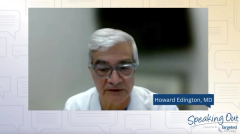
Safety Challenges of Oncolytic Virus Therapy
As part of its Speaking Out series, Patrick Wagner, MD, discusses safety concerns regarding oncolytic viral therapy.
Episodes in this series

Viral therapy for cancer holds promise for many tumor types. However, ensuring the safety of these therapies remains a significant concern for researchers. One of the main safety issues revolves around not only making sure that the therapy is safe, but is also rigorously tested, and FDA-approved, especially for live viral vaccines.
“A lot of that depends on this specific oncolytic virus and what exactly the model is,” said Patrick Wagner, MD, surgical oncologist at Allegheny Health Network.
This consideration for safety extends beyond just the patients receiving the treatment. It also involves the health care workers who are administering the therapy, and the patients’ families or caretakers that may have accidental exposure to the virus.
Once the therapy is administered, more risks exist. These risks include the potential of uncontrolled viral spread, immune system reactions, off-target infection, and unpredictable reactions to the virus or its delivery medium. Rigorous testing is required to identify and mitigate these concerns.
Wagner considers the importance of developing a diverse array of tumor-specific oncolytic viruses. With this, he emphasizes the need for careful integration of oncolytic therapies with existing treatments and determining the optimal place for oncolytic therapies within current treatment regimens. He recognizes these as priorities in further development to maximize their efficacy while also minimizing potential risks.
“Whenever something gives us a signal in that context, that then becomes a huge challenge to figure out where to plug this in into standard algorithms and standard of care,” Wagner added.
While oncolytic viral therapy for cancer is a promising avenue, its safe implementation relies on rigorous testing and careful consideration of how it fits into current treatment strategies. As clinicians continue to ensure that the benefits of viral therapy are realized, they must also work to minimize any potential risks to patients, health care workers, and others who might be exposed to the therapy.










































